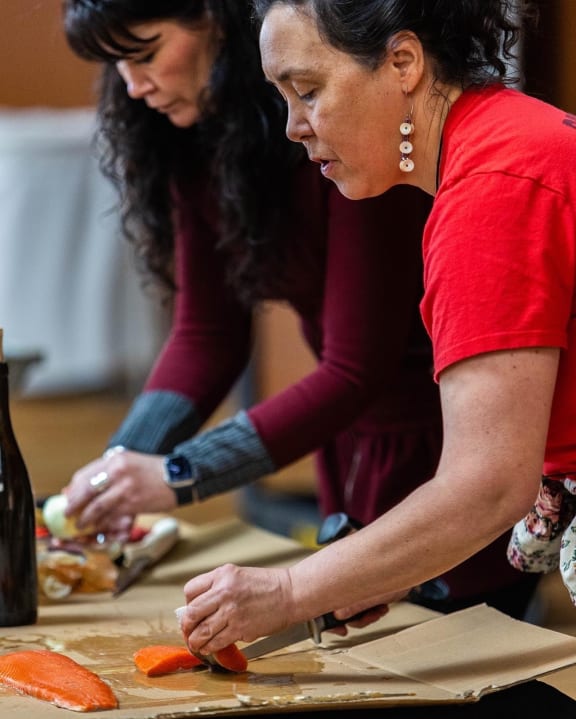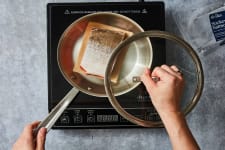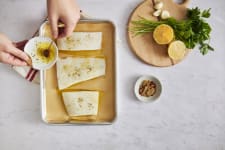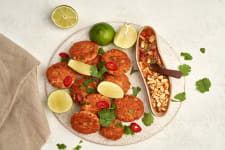This week, I’m passing the mic to sockeye freedom fighter Melanie Brown. As a Native Alaskan, Melanie’s ties to salmon as a food and cultural touchpoint are ancestral, going back generations upon generations. Some of you may be acquainted with Melanie from the summer, via her essay celebrating the role of sockeye in Bristol Bay.
This week, I’m thrilled to share with you her reflections on deep traditions of preservation. These traditions have served to connect Melanie and her community to the ancestral practices that have helped to sustain Alaskans for millennia, through to today. Her work and passion is also what first connected her to the Kallenberg family.
Reading her story, I’m struck by the preservation of tradition she is carrying on, first from her grandmother, her mother, and now as she works to pass traditions on to her larger community.
Melanie is one of the many figures putting these traditions into practice to ensure that these generational connections hold fast, even in an era of great change.
***
Preservation: Salmon, Family, Community, Tradition, and Memories
By Melanie Brown
My people, the Unangax̂, Sugpiaq, Yup’ik and Iñupiaq, are the water people of Western Alaska and have ways of preserving salmon that require little to no refrigeration or freezing.
In my life I’ve learned several ways of preserving salmon, with methods varying from salting, to pickling to freezing. While the methods differ, the way I learned was always the same, through the elders in my family and in my community. I’ve taken these oral traditions and now continue to pass them down. I’d like to share some of these memories with you, and perhaps they will spark memories of recipes or traditions you’ve shared through generations in your family as well.
Preserving Salmon as a Necessity
Prior to the modern age that brought refrigeration technology to the region, it was necessary to find ways to preserve the vital salmon proteins of summer during the fall hunting season when the freezing temperatures of winter had not yet come to keep meat and fish cold enough to keep from spoiling.
Drying and smoking salmon provided a means to stockpile nutritious food that was light and portable for people heading out to seek and hunt foods other than salmon during the long winter months. My Great Grandfather Paul Chukan used to say to me, “When I eat salmon in the morning I don’t get hungry all day.”
Later, when salt was brought to the people, it was a boon, adding new ways of flavoring and producing new salmon products, such as salt fish and pickled fish.
Salmon Preservation Over a Lifetime
From a young age, I sought to learn how to make good food from my mother, who learned from her grandmother. When I started living away from my parents, I wanted to find ways to take the salmon I had caught with me, which was a challenge. It is hard to travel with fresh or frozen fish. I was also living in small apartments where I had a limited amount of space to freeze salmon.
This spurred me to learn how to can small batches of salmon in jars to take with me. Pressure canning is a wonderful and portable way to preserve salmon. Learning how to cut the salmon so it fit well in the jars and the time watching the pressure gauge on the cooker with my mom and others who guided me in the kitchen was a learning experience that laid the foundation for my food life. From there, my fish cutting skills improved and my curiosity of salmon preservation methods for winter continued to grow.
Sometimes in the flurry of summer activity, it is most expedient to freeze your fish first and make other things later. Freezing the fish properly preserves the texture and flavor for cooking later in the season. If your freezer is too full, there are a multitude of things you can do when you pull your salmon out to work with it. You can make gravlax, with just a couple days of curing.
Canning can happen after freezing your fish as well, which can be done with skin-on, bone-in salmon for added omega-3s and calcium. You can literally eat the pieces of backbone after canning because of how pressure canning softens the bones.
Pickling is another way to preserve salmon for an extended time in your refrigerator in a jar.
Bonding Through Tradition
The work of catching, cutting, and preserving salmon is something that brings people together, and when the time comes to enjoy the fruits of this labor, the memories and bonds created by the culturally relevant food of salmon serves to bring the people together again.
My friend Gayla and I have had the honor of sharing some of our fish cutting knowledge and pickling techniques with youth and elders at the annual Elders and Youth conference for a number of years now. Some of the activity participants find themselves cutting salmon for the first time in their lives, so it’s very rewarding to share this experience — especially with the youth — to help them realize that working with fish is not so hard, even if they were raised and live in an urban setting.
Gatherings like these are a testament to the fact that even though times have changed since Alaska’s first people started dreaming up ways to preserve salmon, the act of working with the super protein of salmon binds people to each other to this day.
***
Thank you Melanie for sharing your experiences with the Wild Alaskan Company fish family, and continuing to preserve the traditions that have made it possible for wild salmon to sustain the Alaskan community and beyond.
Live Wild,
Monica
Pictured above: Melanie Brown, demonstrating the tradition of cutting salmon for preservation. Photo credit: Tyler Bell






